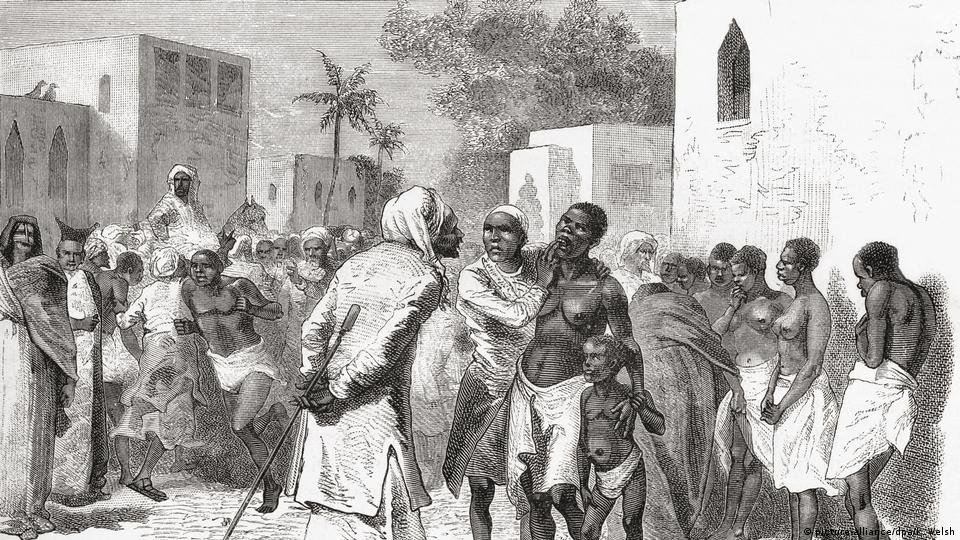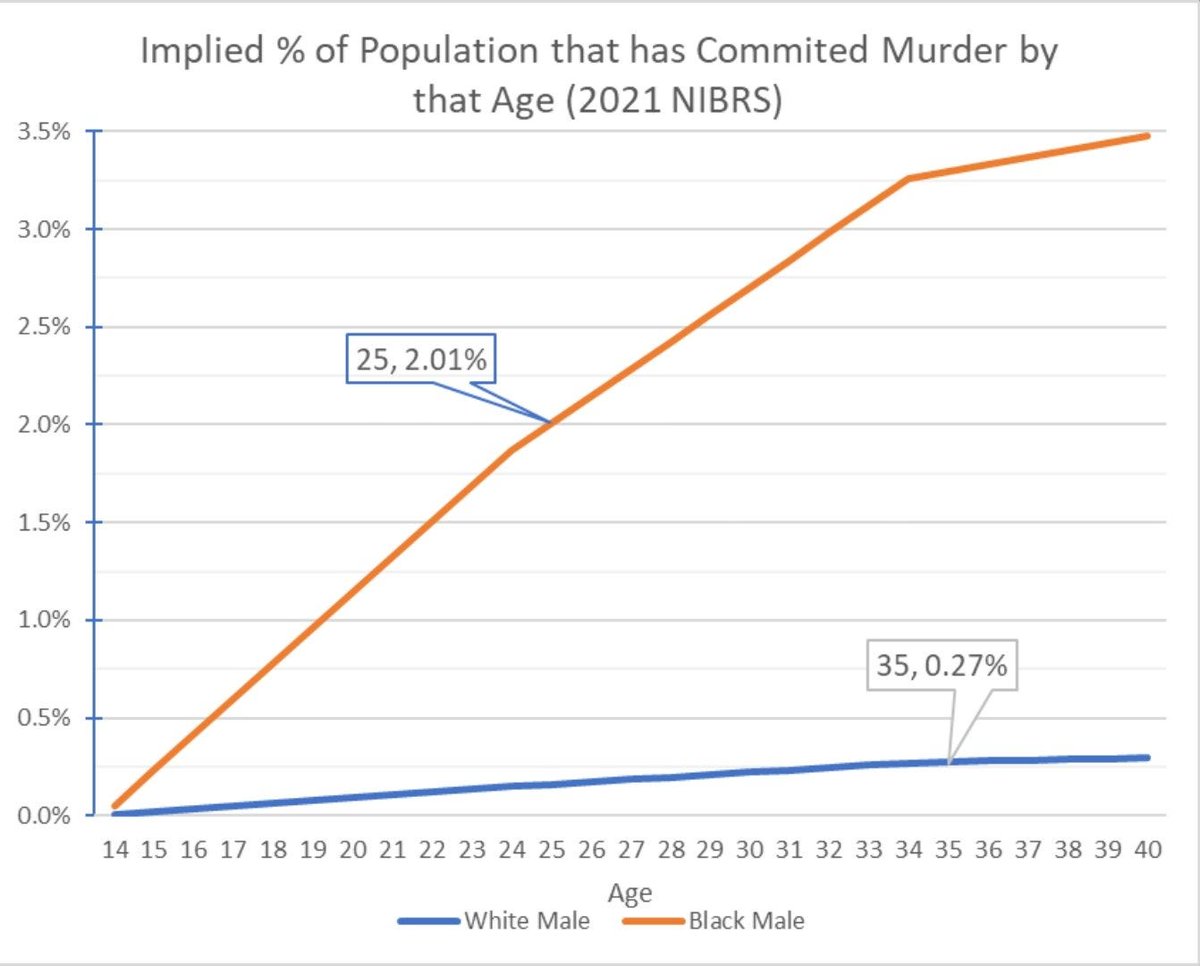🧵 A look at slavery outside of the West:
It has become popular to blame White people for slavery, to the point that many actually believe slavery was invented by or exclusively practiced by Europeans.
But the history of slavery outside the West is far more brutal.
1/15
It has become popular to blame White people for slavery, to the point that many actually believe slavery was invented by or exclusively practiced by Europeans.
But the history of slavery outside the West is far more brutal.
1/15

2/15 The Arab slave trade emerged in the 7th century, 10 centuries before the Atlantic slave trade
Arabs sold Africans to the Middle East for a variety of jobs such as domestic work or harem guards - castrating male slaves was common, causing over half of males to bleed to death
Arabs sold Africans to the Middle East for a variety of jobs such as domestic work or harem guards - castrating male slaves was common, causing over half of males to bleed to death

3/15 The Arab slave trade was particularly brutal: it's estimated that 3/4 captured slaves died before they reached the market for sale
Historians estimate that between 10 and 18 million people were enslaved by Arab slave traders, including women and children taken as concubines
Historians estimate that between 10 and 18 million people were enslaved by Arab slave traders, including women and children taken as concubines

4/15 Arabs did not create the slave trade out of nothing, in fact, enslaving conquered tribes was already common practice in Central Africa when they arrived.
The West African Songhai Empire relied heavily on captured slaves in all levels of society, even as soldiers.


The West African Songhai Empire relied heavily on captured slaves in all levels of society, even as soldiers.


5/15 Africans themselves also played a large role in facilitating the trans-Atlantic slave trade.
African tribes conducted raids on rival groups to provide slaves for sale. African middlemen facilitated trade between European traders and African suppliers.



African tribes conducted raids on rival groups to provide slaves for sale. African middlemen facilitated trade between European traders and African suppliers.



6/15 The Arabs also had a slave trade in Europe. Estimates are that up to 1.25 million Europeans were enslaved by Barbary pirates, who would raid villages in coastal countries like Italy, France, England and Ireland, bringing them to North Africa for sale. 

7/15 In some cases entire villages would be captured, such as the Irish coastal village of Baltimore, entirely raided in 1631.
These slaves faced a brutal future, engaging in hard labour or sexual servitude, and spending nights hot and overcrowded prisons called bagnios.



These slaves faced a brutal future, engaging in hard labour or sexual servitude, and spending nights hot and overcrowded prisons called bagnios.



8/15 Many slaves captured by Barbary pirates were sold eastwards into the Ottoman Empire. Slavery was central to the Ottoman Empire, most towns had dedicated slavery markets called Yesirs.
Slaves came from Africa, the Caucasus, the Balkans and Eastern & Southern Europe.
Slaves came from Africa, the Caucasus, the Balkans and Eastern & Southern Europe.

9/15 Sexual slavery was a big part of Ottoman society. Slavic women were popular slaves, and Köçeks became a popular source of entertainment in the 19th century:
These were young boys, usually from European backgrounds, who were circumcised, cross-dressed and trained as dancers.


These were young boys, usually from European backgrounds, who were circumcised, cross-dressed and trained as dancers.


10/15 Hereditrary slavery is recorded in China dating back to the Xia Dynasty in 2100 BC. Africans purchased on the Silk Road were used as a sign of wealth.
After Chinese law began to treat women as property around 1000AD it was common to sell daughters and sisters into slavery.


After Chinese law began to treat women as property around 1000AD it was common to sell daughters and sisters into slavery.


11/15 The Mongols enslaves tens of thousands of Chinese as punishment for resistance.
In the post-Mongol Ming Dynasty, thousands of slaves were employed to do bureaucratic jobs for the government, and rich families also employed thousands of slaves to perform menial labour.
In the post-Mongol Ming Dynasty, thousands of slaves were employed to do bureaucratic jobs for the government, and rich families also employed thousands of slaves to perform menial labour.

12/15 Slavery was common in American civilizations like the Aztec and Maya
Among the Aztecs, slavery was a punishment for a variety of crimes or even failure to pay taxes. Husbands and wives sold each other in times of economic hardship. Slaves were identified by wooden collars.
Among the Aztecs, slavery was a punishment for a variety of crimes or even failure to pay taxes. Husbands and wives sold each other in times of economic hardship. Slaves were identified by wooden collars.

13/15 Slavery was also common practice in the civilizations of South-East Asia.
The Khmer Empire had a massive slave class that did much of the work building monuments like Angkor Wat. Historians estimate 25-35% of the population of Thailand/Burma were slaves in the 17th century


The Khmer Empire had a massive slave class that did much of the work building monuments like Angkor Wat. Historians estimate 25-35% of the population of Thailand/Burma were slaves in the 17th century


14/15 Slavery also existed among Native American tribes. Slavery was common practice among Northwest tribes like the Tlingit, for whom one third of their population during the mid-1800s were slaves.
Various tribes practiced debt-slavery and enslaved captives of other tribes.


Various tribes practiced debt-slavery and enslaved captives of other tribes.


15/15 The only difference between these cases of slavery and that practiced by Europeans is that Europeans abolished slavery on humanitarian grounds, and spread this across the globe.
The intense focus on the White role in slavery is a product of widespread Anti-White animus.
The intense focus on the White role in slavery is a product of widespread Anti-White animus.

• • •
Missing some Tweet in this thread? You can try to
force a refresh














